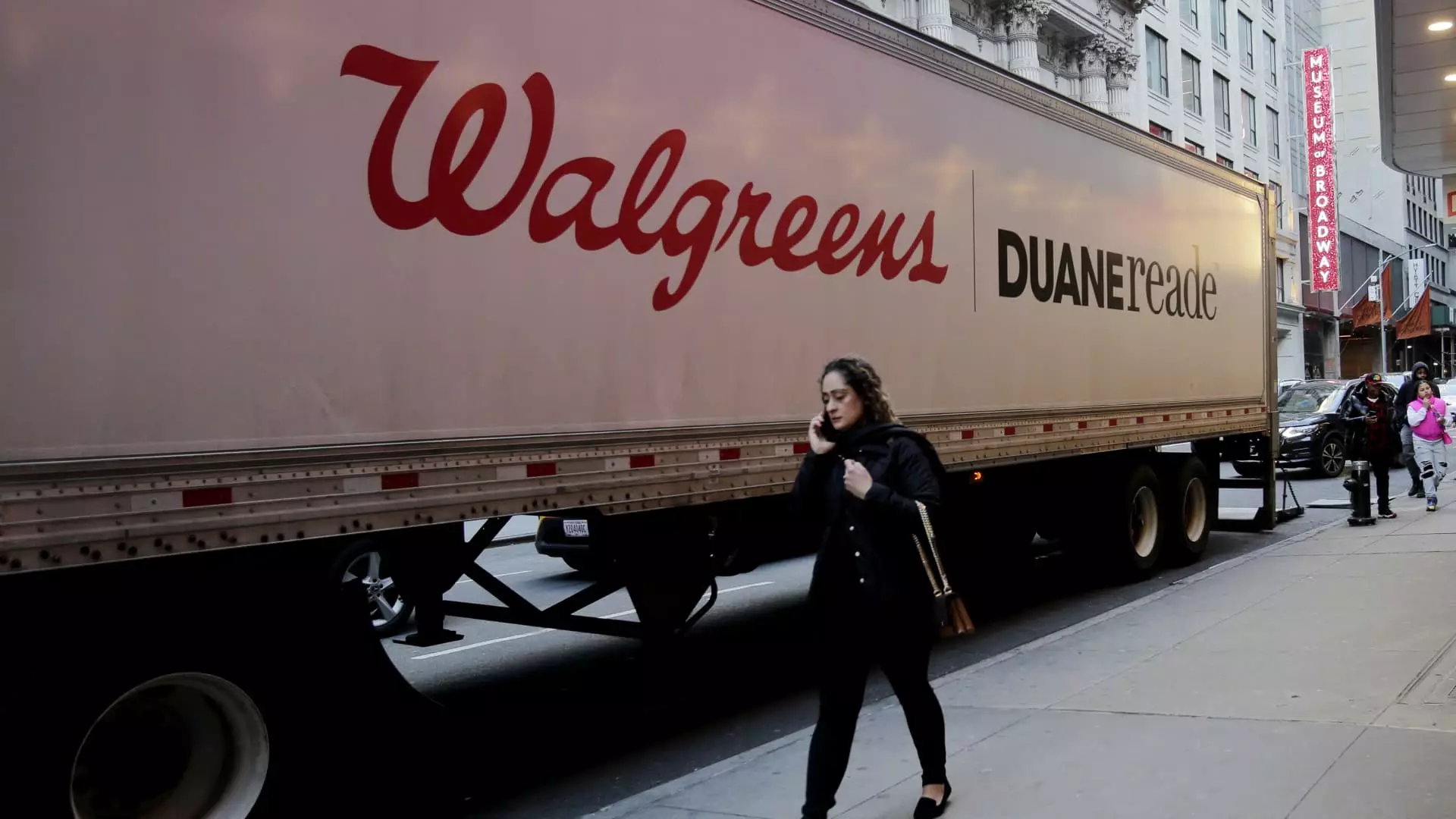Walgreens Boots Alliance has recently announced its fiscal first-quarter earnings, which not only surpassed Wall Street’s expectations but also shed light on the company’s ongoing transformation as it strives to stabilize its operations. The company’s decisive actions—such as reducing its store count and employing stringent cost management—illustrate its commitment to returning to a path of profitability. This article dissects the financial results for the quarter ended November 30, the implications for the future, and the context surrounding Walgreens’ recent performance.
The results released on Friday painted a promising picture for Walgreens. Adjusted earnings per share for the quarter stood at 51 cents, easily eclipsing the expected 37 cents, while revenue hit $39.46 billion—an impressive 7.5% increase year-over-year—compared to projections of $37.36 billion. Despite these strong results, Walgreens opted to maintain its fiscal 2025 adjusted earnings guidance between $1.40 and $1.80 per share, signaling a cautious approach as they navigate financial challenges. The absence of annual sales guidance in the release adds an element of uncertainty, yet the company previously estimated revenue between $147 billion and $151 billion for the fiscal year.
Walgreens’ robust earnings report was met with enthusiasm in the stock market, resulting in a roughly 10% surge in the company’s shares during premarket trading. This positive market response underscores investor confidence in the company’s strategy, despite a tumultuous backdrop characterized by pressures on pharmacy reimbursements, declining consumer spending, and a challenging foray into primary care services.
However, looking beyond the favorable earnings, Walgreens recorded a net loss of $265 million, or 31 cents per share, for the quarter—an increase from the $67 million loss, or 8 cents per share, in the same period last year. This rise in losses primarily stems from significant operational changes as the company embarks on a multi-year initiative to close underperforming retail locations, targeting approximately 1,200 stores over the next three years, with 500 of those closures expected in fiscal 2025. This strategy reveals a painful yet necessary restructuring as Walgreens aims to revitalize its business model in an increasingly competitive retail environment.
The results disclosed a mixed landscape within Walgreens’ various business segments. The U.S. retail pharmacy division reported sales of $30.87 billion—markedly higher than analyst expectations of $29.21 billion, reflecting a 6.6% increase from the previous year. The pharmacy segment, where prescriptions are king, saw sales leap by 10.4%, attributing this growth to price inflation on brand medications. However, not all metrics performed similarly; retail sales witnessed a decline of 6.2%, compounded by reduced consumer demand in non-essential product categories and a less pronounced cough, cold, and flu season compared to previous years.
On a more positive note, the company’s healthcare segment achieved significant growth. Sales from this unit reached $2.17 billion—up over 12% year-on-year, surpassing estimates of $2.09 billion. This uptick reflects successful advancements in Walgreens’ ventures with primary-care provider VillageMD and its specialty pharmacy operation, Shields Health Solutions. The ongoing development of these healthcare services is pivotal for Walgreens as it looks to diversify its offerings and integrate healthcare more fully into its operations.
The company’s international division, which operates over 3,000 retail stores, also contributed positively with $6.43 billion in sales, up 10.2% from last year and exceeding expectations of $5.85 billion. Notably, the U.K.-based Boots chain reported a 4.5% sales increase, laying the groundwork for Walgreens’ continued international presence and expansion.
Walgreens’ first-quarter report highlights a landscape of both promising growth and lingering challenges. While the financial figures indicate a recovery trajectory supported by strategic adjustments and market response, the road ahead remains fraught with uncertainty. The company is navigating a complex environment that demands careful execution of its turnaround strategy, particularly as it grapples with operational losses and adapts to shifting consumer behaviors. As Walgreens continues to refine its retail pharmacy-led model, the efficacy of these strategies will be critical in determining its long-term success and sustainability.

